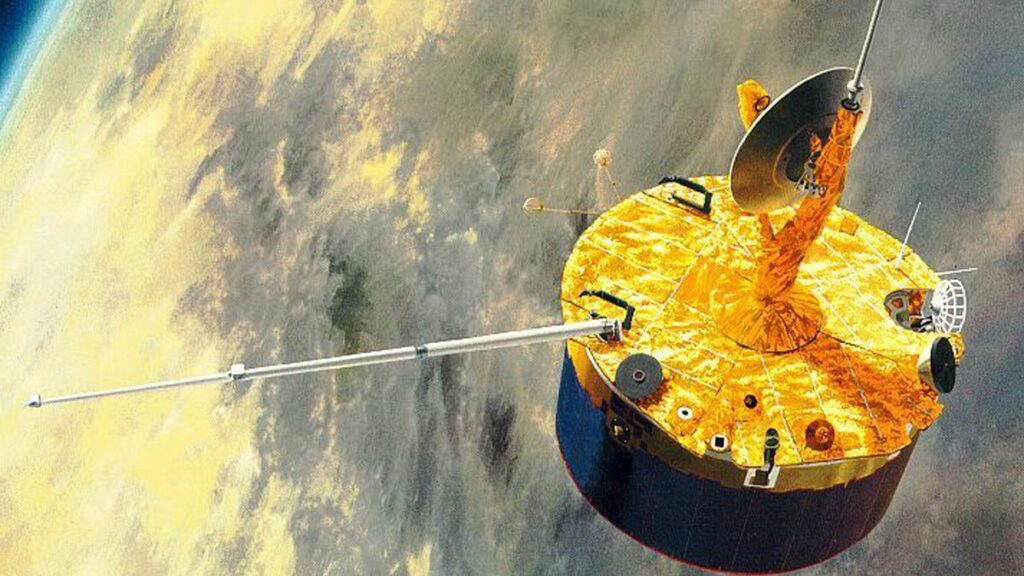On May 20, 1978, NASA launched a spacecraft to Venus. The mission was called Pioneer-Venus 1, but it’s also known as the Pioneer Venus Orbiter.
This was the first of two spacecraft that made up the Pioneer Venus mission. Pioneer Venus 2 launched a couple months later, and that spacecraft dropped five probes onto the surface of Venus. NASA called this the Pioneer Venus Multiprobe. The orbiter was designed to study the atmosphere of Venus. It was a solar-powered cylinder about the size of a hot tub.
The mission launched from Cape Canaveral on an Atlas-Centaur rocket and reached Venus about six months later. While orbiting Venus, it measured the structure of the upper atmosphere and studied how the solar wind interacts with its ionosphere and magnetic field. It also detected gamma-ray bursts and made ultraviolet observations of comets.
Pioneer Venus 1 continued to beam back data for 14 years before its decaying orbit sent it into Venus’s atmosphere, where it was destroyed.
Source: https://www.space.com/39251-on-this-day-in-space.html



